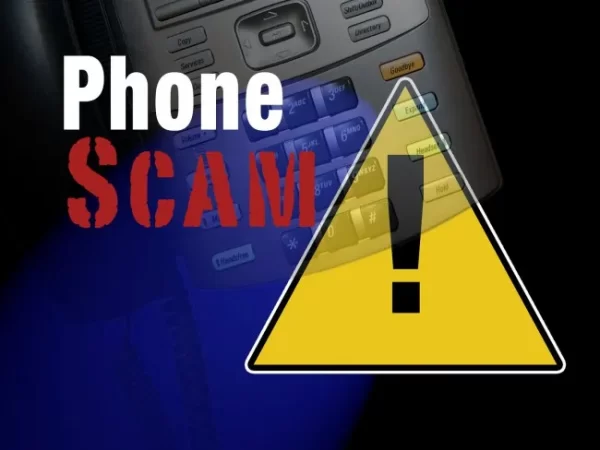In the digital age, where information is exchanged at the speed of light, scams and fraudulent activities have also evolved. One such scam that has been making rounds is the US9514961195221 scam fake text messages. These deceptive messages have left many people bewildered and concerned about their safety in the online world.
This article will delve into the details of the US9514961195221 scam, shedding light on what it is, how it works, and what you can do to protect yourself. We’ll also provide answers to frequently asked questions to help you navigate this murky online landscape.
Understanding the US9514961195221 Scam
What is the US9514961195221 Scam?
The US9514961195221 scam, also known as the “fake text messages” scam, involves deceptive text messages sent to individuals with the intent of tricking them into taking specific actions that can harm them financially or compromise their personal information.
How Do the Scammers Operate?
Scammers typically send messages that appear urgent or threatening, claiming to be from a reputable source such as a bank, government agency, or a well-known service provider. These messages often contain links or phone numbers that recipients are urged to contact immediately.
Common Characteristics of the Scam Messages
Scam messages often exhibit several telltale signs, including spelling and grammatical errors, suspicious sender information, and requests for personal information or financial transactions.
The Anatomy of a Scam Message
The Message Content
Scam messages often employ fear tactics, claiming that the recipient’s account has been compromised, their payment is overdue, or they are involved in legal matters. These messages aim to trigger panic and a sense of urgency.
The Sender’s Identity
Scammers can disguise their identity, making it appear as though the message is from a legitimate source. They may use names of well-known organizations or government agencies, making it difficult for recipients to discern the message’s authenticity.
Urgent Calls to Action
Scam messages typically demand quick action, such as clicking on a link, making a payment, or providing personal information within a short timeframe, usually within hours or even minutes.
Why are People Falling for this Scam?
Psychological Manipulation
Scammers rely on psychological tactics to manipulate their victims. Fear, urgency, and the fear of consequences are used to cloud judgment and encourage immediate compliance.
Lack of Awareness
Many individuals are unaware of the tactics scammers use, making them vulnerable targets. They may not recognize the signs of a scam message until it’s too late.
Fear of Consequences
The fear of facing legal action, account suspension, or financial loss can push recipients to act hastily, without verifying the legitimacy of the message.
Protecting Yourself from the US9514961195221 Scam
Tips to Identify a Scam Message
- Look for spelling and grammatical errors.
- Verify the sender’s identity independently.
- Avoid clicking on suspicious links or downloading attachments.
- Be cautious when asked to provide personal or financial information.
What to Do If You Receive Such a Message
- Do not engage with the message.
- Delete the message immediately.
- Report the message to the relevant authorities.
Steps to Enhance Your Online Security
- Keep your devices and software updated.
- Use strong, unique passwords for online accounts.
- Enable multi-factor authentication where available.
- Educate yourself about common scams and stay vigilant.
Reporting Scam Messages
The Importance of Reporting
Reporting scam messages is crucial in the fight against online fraud. It helps authorities track down scammers and protect potential victims.
How to Report Scam Messages
Most countries have dedicated agencies or websites where you can report scam messages. Contact your local law enforcement or consumer protection agency for guidance.
Collaborative Efforts to Combat Scams
Governments, law enforcement agencies, and tech companies are working together to combat scams. They often share information and collaborate on initiatives to identify and prosecute scammers.
FAQs about the US9514961195221 Scam
Q 1: What should I do if I receive a suspicious text message?
A: If you receive a text message that appears suspicious, do not respond to it. Delete the message and report it to your local authorities or relevant consumer protection agency.
Q 2: Can I trust caller ID information displayed with the message?
A: Caller ID information can be easily spoofed by scammers. Always verify the identity of the sender independently, especially if the message seems urgent or demanding.
Q 3: What if I already clicked on a link in a scam message?
A: If you clicked on a link in a scam message, immediately disconnect from the internet, run a security scan on your device, and change any compromised passwords. Report the incident to the relevant authorities.
Q 4: How can I educate myself about different types of scams?
A: Stay informed by regularly reading about the latest scams and fraud tactics online. Government websites, consumer protection agencies, and cybersecurity blogs are excellent sources of information.
Q 5: Are there any legal consequences for scammers if they are caught?
A: Yes, scammers can face legal consequences, including fines and imprisonment, if they are caught and prosecuted. Reporting scam messages is crucial in bringing scammers to justice.
Conclusion
The US9514961195221 scam fake text messages are a reminder that vigilance and awareness are essential in the digital age. By understanding the tactics used by scammers, recognizing the signs of a scam message, and taking proactive measures to protect yourself, you can reduce the risk of falling victim to such deceptive schemes. Remember, reporting scam messages is not only a way to protect yourself but also a way to contribute to the collective effort to combat online fraud and make the internet a safer place for everyone. Stay informed, stay safe, and stay one step ahead of the scammers.

